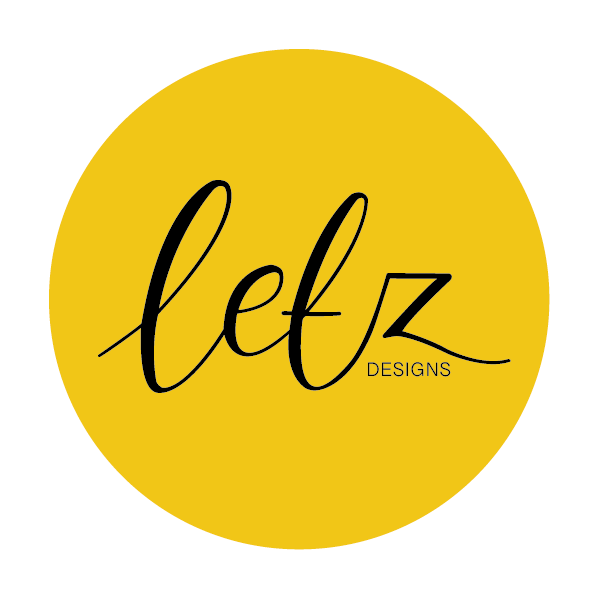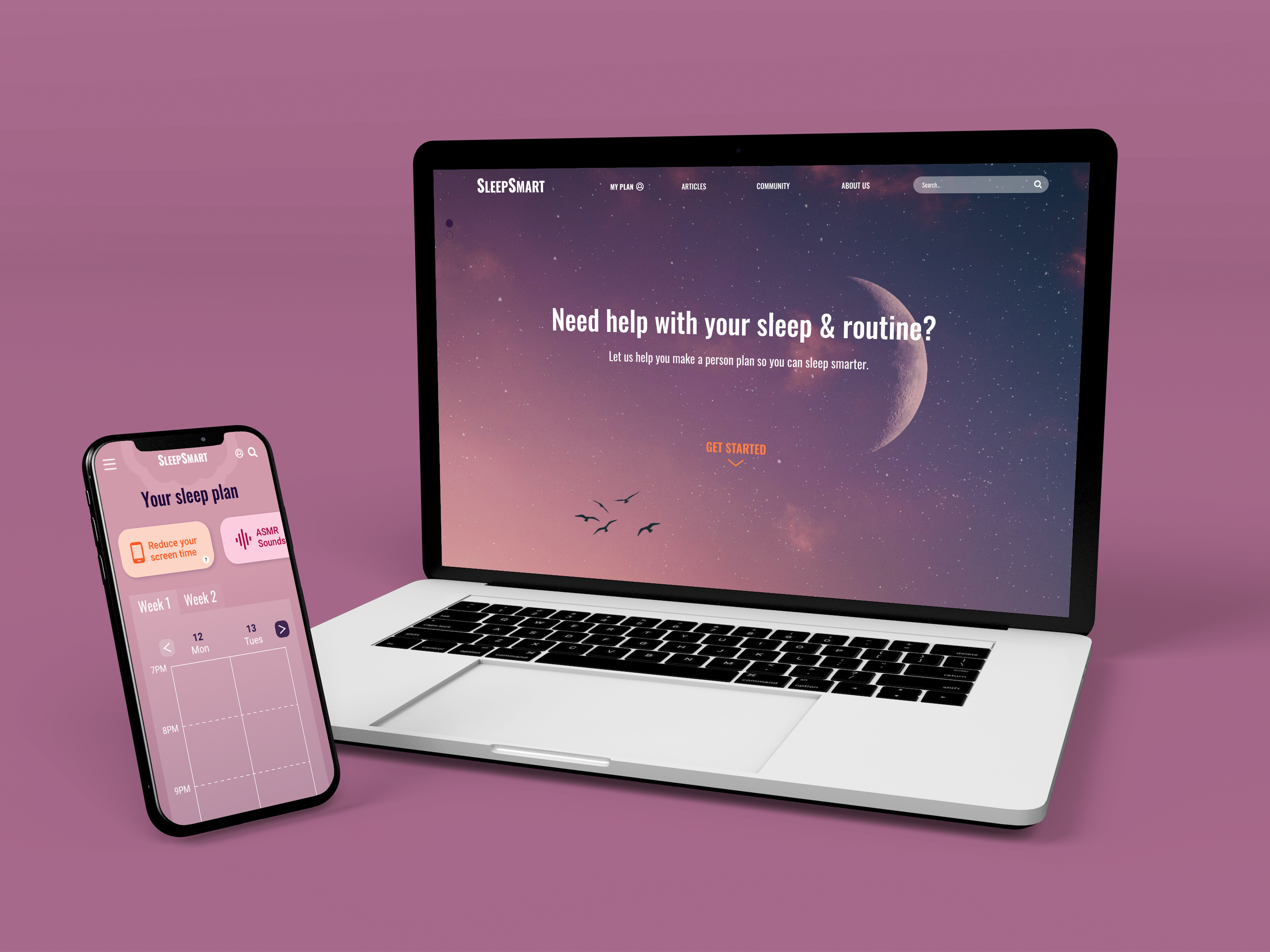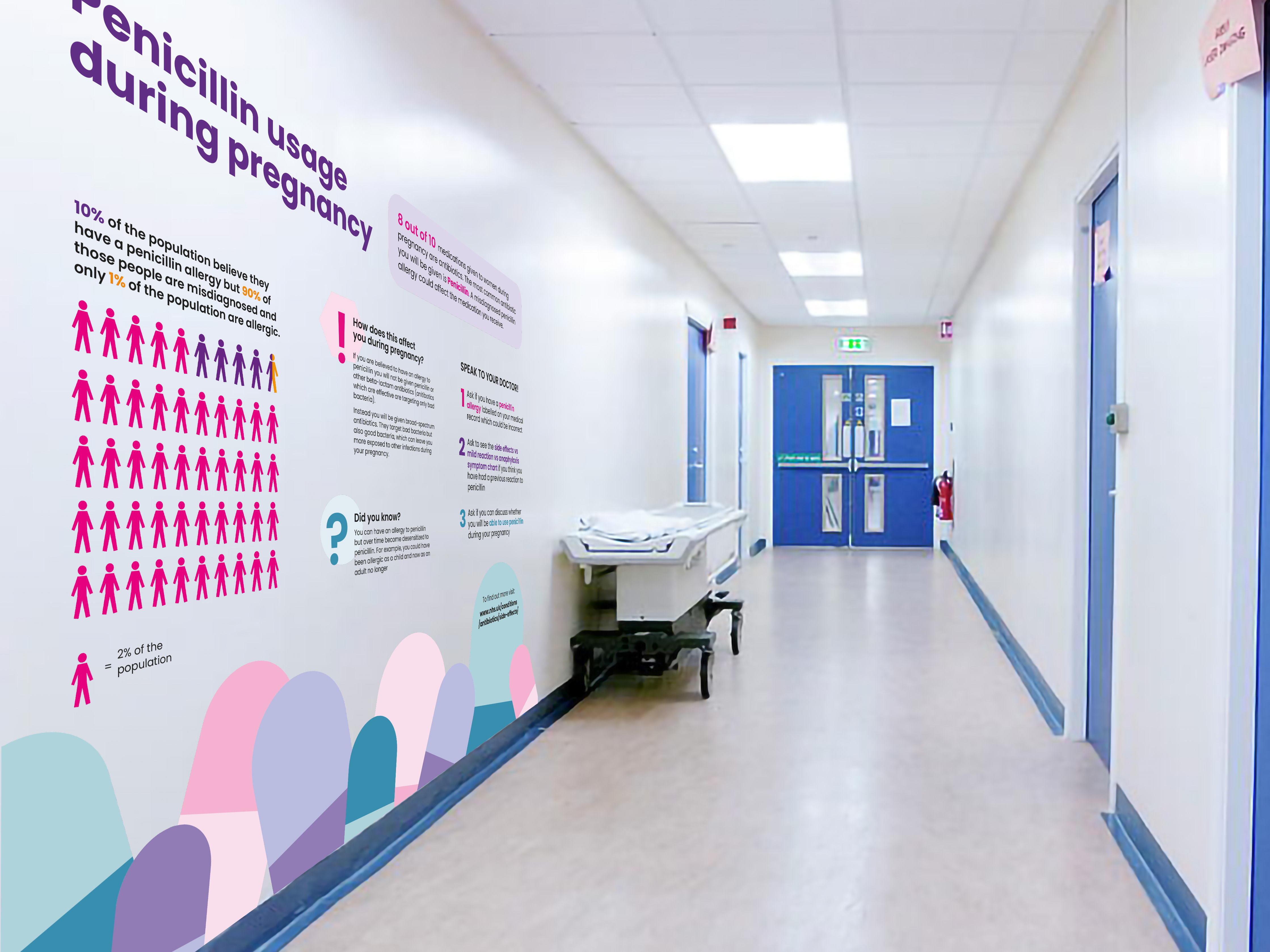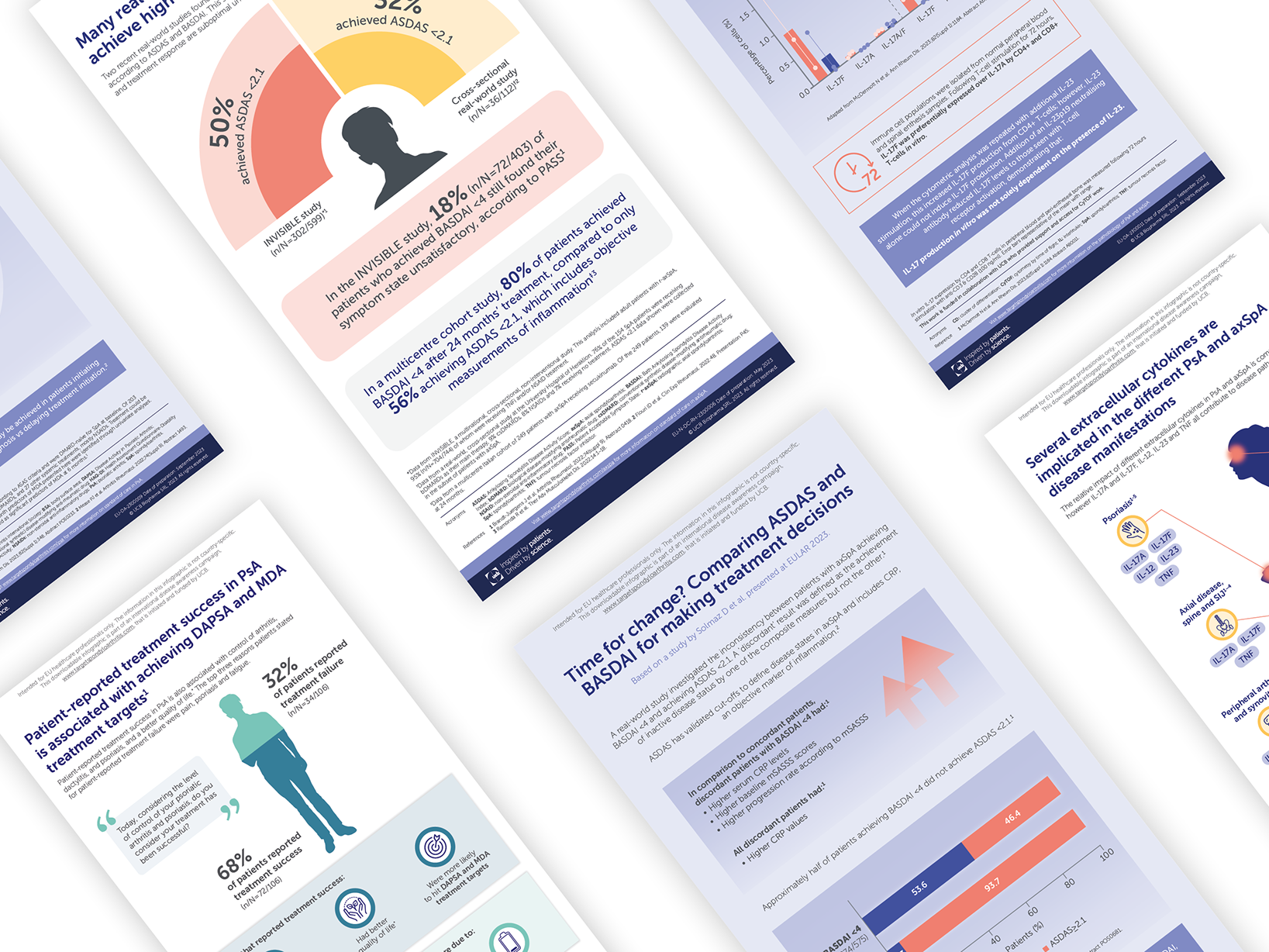An information design project, transforming the research conclusions of a PhD thesis about the language and speech impairment aphasia, into a two page infographic which would be aphasia-friendly and additional summary graphic for use on social media.
An independent design project completed through the Real Jobs scheme for my client Willemijn Doedens, a PhD student in the School of Psychology and Clinical Language Sciences at the University of Reading. With a background in speech and language therapy, the client’s PhD research focuses on aphasia. Aphasia is a language and speech impairment occurring as a result of brain damage. For this project the client requested two infographics to summarise her research conclusions which explore how real-world communications can be defined, how they can be clinically tested and the findings of her research experiments. The main infographic would be included within the research thesis, acting as a visual break from the written content. The second infographic would be used on social media to summarise the full infographic and promote the publication of her research paper.
A crucial aim of the project was to make the infographics aphasia-friendly, so the client could share
the research results with the participants of her experiments, who have aphasia. As a result, at the core of this project was gaining an understanding of how to design for those with aphasia. Collaborating with the client to gain an insight into the subject area became a vital tool for my research and I gained far more perspective on the direction I would need to take the designs for them to become aphasia-friendly. For example, those with aphasia understand documents best when each part of the text is supported by a diagram. Consequently, content transformation on this project featured not only the summarising of 1500 words into short snippets of information but also the exploration of illustrations and data visualisations to accurately support and explain the text.
the research results with the participants of her experiments, who have aphasia. As a result, at the core of this project was gaining an understanding of how to design for those with aphasia. Collaborating with the client to gain an insight into the subject area became a vital tool for my research and I gained far more perspective on the direction I would need to take the designs for them to become aphasia-friendly. For example, those with aphasia understand documents best when each part of the text is supported by a diagram. Consequently, content transformation on this project featured not only the summarising of 1500 words into short snippets of information but also the exploration of illustrations and data visualisations to accurately support and explain the text.
Content transformation: breaking down the thesis conclusions into more digestible
text and supporting visuals in order to make the content more aphasia-friendly
text and supporting visuals in order to make the content more aphasia-friendly
Content transformation: breaking down the results of the thesis's experiments
by exploring data visualisations which could efficiently display the results
by exploring data visualisations which could efficiently display the results
Below are the final outcomes of this project including the infographics for use within the client's
thesis and the additional infographic for social media to be used for advertising the published thesis. The infographics for the thesis were designed into two separate pages – one explaining the conclusion answers and one for the experiment results. Whilst it was preferred that these two pages would be displayed across a double spread within the thesis, designing the pages to work individually gave the client flexibility in their placement and the format required for the digital submission of the thesis during COVID-19. The work can be viewed on pages 300/301 of the thesis, available to view here.
thesis and the additional infographic for social media to be used for advertising the published thesis. The infographics for the thesis were designed into two separate pages – one explaining the conclusion answers and one for the experiment results. Whilst it was preferred that these two pages would be displayed across a double spread within the thesis, designing the pages to work individually gave the client flexibility in their placement and the format required for the digital submission of the thesis during COVID-19. The work can be viewed on pages 300/301 of the thesis, available to view here.
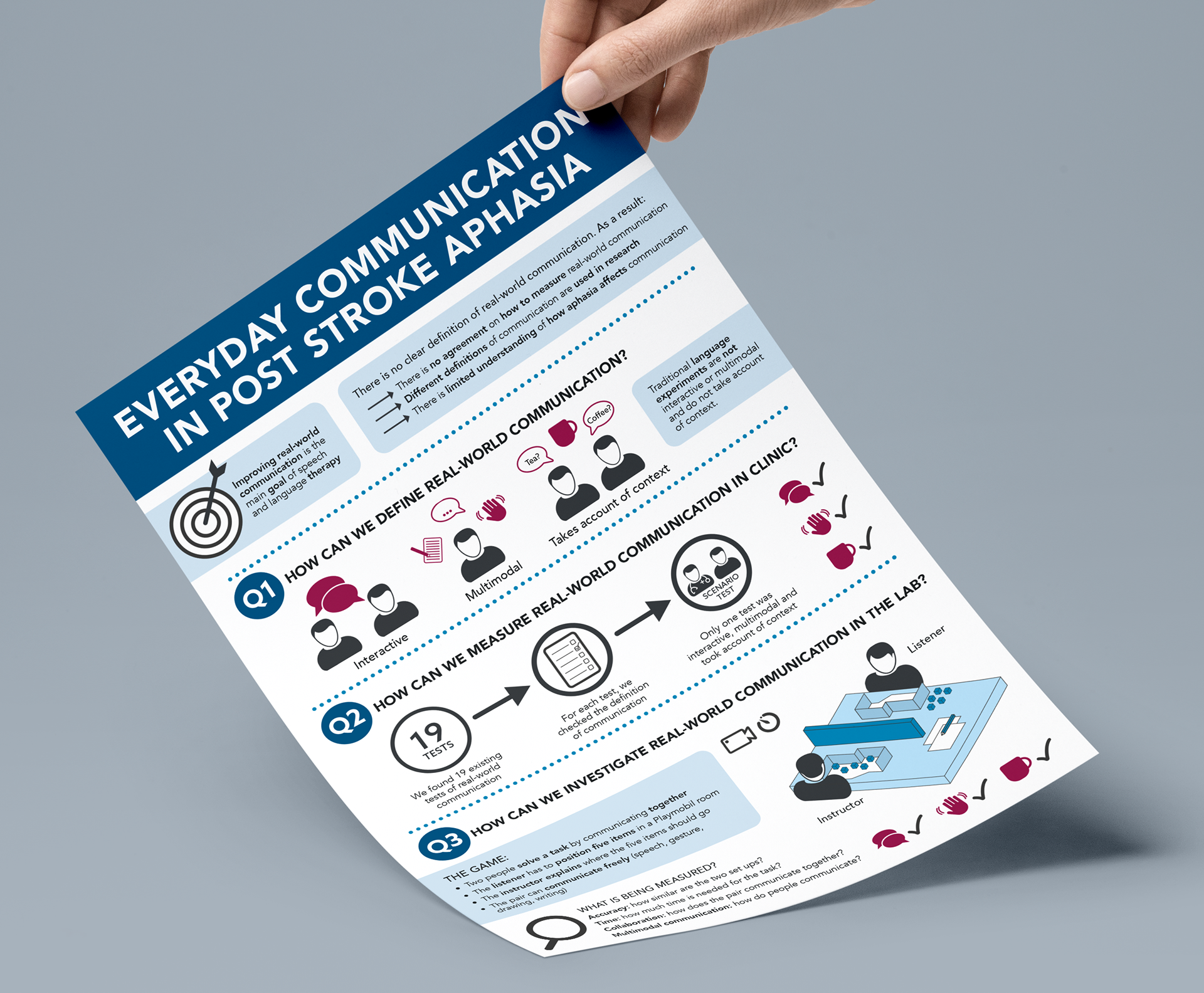
The first page of the thesis infographic exploring the conclusion answers
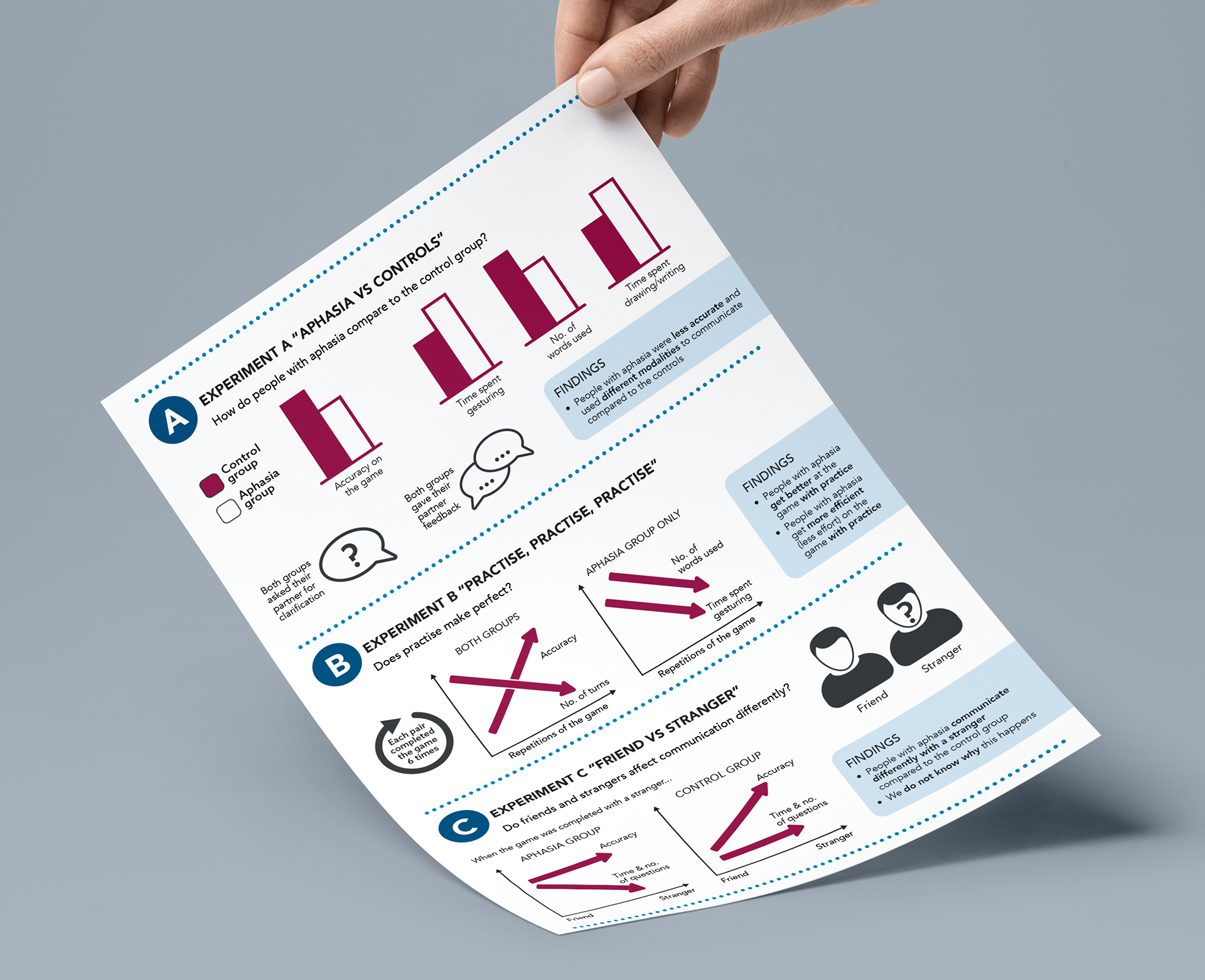
The second page of the thesis infographic exploring the experiment results

The final social media infographic – summarising the more detailed infographics being used within the thesis
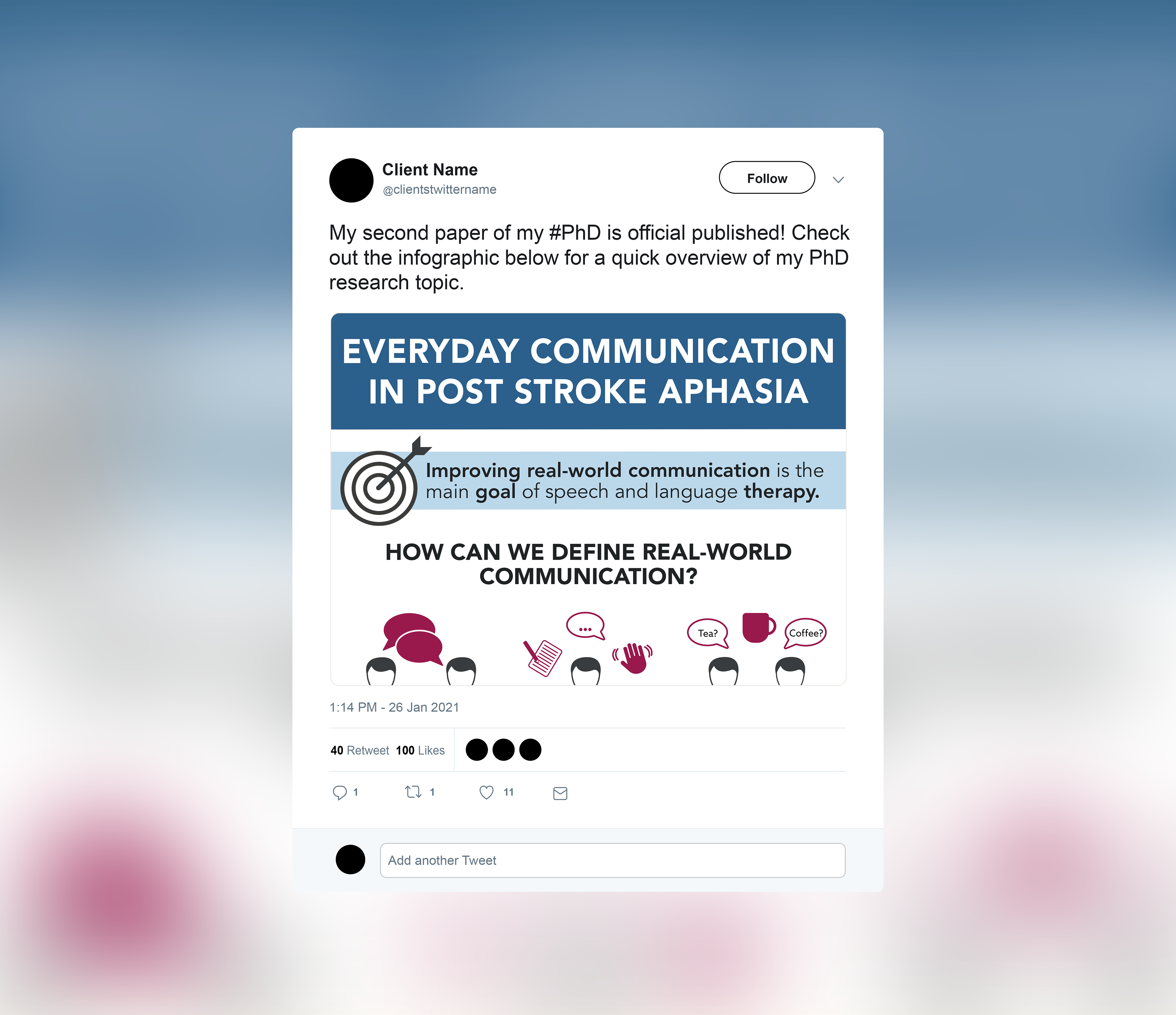
The social media graphic mocked-up as a Twitter post
If you want to read more about this project, you can head to the Typography Network
and read my detailed report about this client project here
and read my detailed report about this client project here
